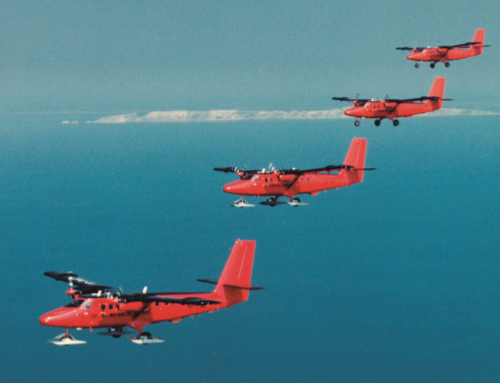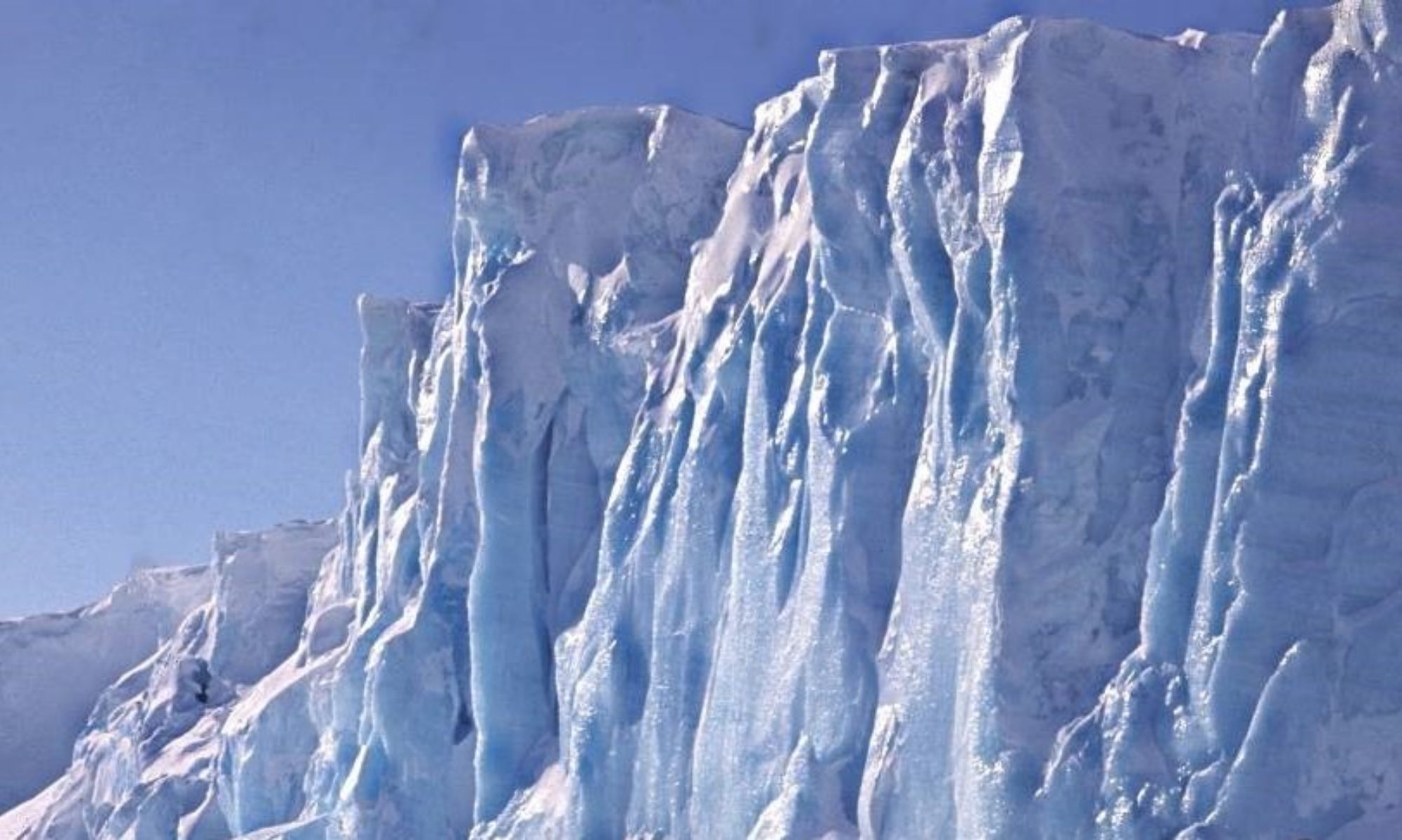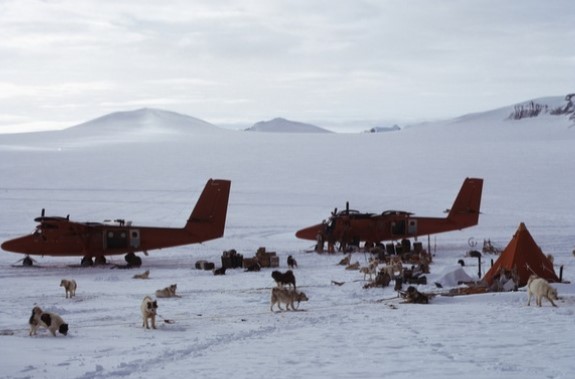Header Photo: Field-based Twin Otters – Airborne Topo Survey 1974 (Photo: Roger Scott)
BAS Air Unit Records & Interesting Stuff
BAS Aircraft Records
This database was compiled with the MASSIVE help of Rob Campbell-Lent, BAS Air Unit Adelaide, 1971. It is, and will be, for the foreseeable future, a Work in Progress, with some duplications to be worked out. We would appreciate any comments, additions, errors and omissions, to [email protected]
BAS Aircraft & Aircrew Database
Falklands – The Air War
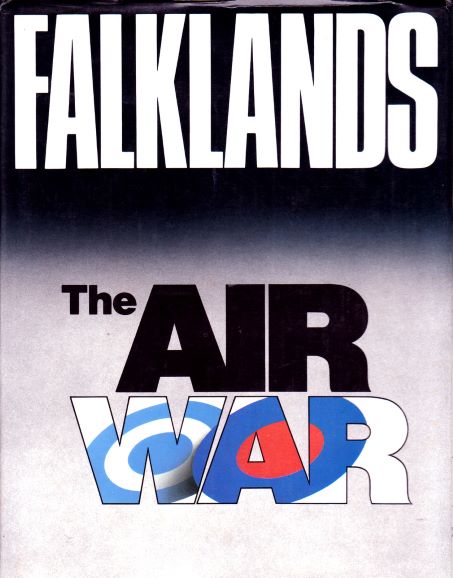
Falklands The Air War was originally published in 1986 by the British Aviation Research Group and was a culmination of extensive research into aviation involvement during events from the 1982 Conflict from both the Argentine and United Kingdom perspectives.
The publication contains a narrative of events with a unique record of all the aircraft types involved, recorded under relevant countries Air Arms by aircraft type, with individual aircraft histories and Conflict losses. All embellished with a selection of unique relevant colour and black & white photographs depicting the chapters together with relevant maps.
Also contained within are details of all the ships deployed by both countries many of which were capable of carrying aviation assets. The publication also contained a section (Part 3) on aviation in the Falklands, The Dependencies and British Antarctic Territory up to the Conflict which also included relevant losses.
1947
Operations & Incidents with ‘Ice Cold Katy’ – Reg Freeman
Reproduced by Permission of BAS Club – Newsletters 23 and 24

(Photo: Kevin Walton)
The story as experienced by the party later in the winter, working to lay depots for the winter journeys. It became an epic incident, resulting in the journey by the three crew to return to Stonington, with no dog teams or other transport, rivalling some of the more well-known and publicised epic journeys. It is an enthralling read of Reg Freeman’s journal, with photos added from the book by Kevin Walton “Two Years in the Antarctic”.
Grab a dram and settle down to read.
Mount Tricorn at approximately latitude 74°S, longitude 62°W, was anticipated as being the most southerly point which would be reached by the proposed sledging party. (Later it was proven that the estimated position of Mount Tricorn was 50 miles in error!).
1958
John Lewis – Pilot, TAE
‘Only those with an adventurous turn of mind would have wished to be on that flight. With extra tankage the Otter had a range, in still air, of 1,600 miles. From South Ice to Scott Base on the Ross Sea was 1,450 miles. It is true that a landing at the Pole would have been possible – if the weather was suitable – but once past there the outlook would have been bleak if a forced landing was necessary … the experience, to put it mildly, would have been unpleasant.’
Polar Flight, by Basil Clarke, refers.
‘As they circled the base, more American aircraft – Dakotas and Otters – came up to meet them and described exuberant circuits of welcome. The Otter went down, with the two American planes flying slightly ahead on either side to guide it in. Then, almost from ground level, whilst it triumphantly touched down, the escorting aircraft roared upwards to join their compatriots in the air – much to the chagrin of all the enthusiastic photographers now borne out of range!
After a flight of exactly eleven hours and 1,430 statute miles, our little single-engined aircraft had made it. As the party clambered stiffly out they were engulfed by a friendly crowd of Americans and New Zealanders, for everyone in McMurdo Sound was there to greet them. Ed Hillary, who had himself only just flown back from the Pole, led the congratulations, and there was a special welcome from John Claydon and Bill Cranfield, the two New Zealand pilots, who could perhaps best appreciate the problems of their flight.’
Sir Vivian Fuchs’ describes the triumphant arrival of Squadron Leader John Lewis after his record breaking trans-Antarctic flight in January 1958 (Antarctic Adventure refers). The well-documented and excessively rare post-war A.F.C. and record polar flight Bar group of eight awarded to Group Captain J. H. Lewis, Royal Air Force, a Battle of Britain veteran who lent valuable service as Senior Pilot of the Commonwealth Trans-Antarctic Expedition under Sir Vivian Fuchs in 1957-58 and made the first ever Antarctic crossing by a single engined aircraft – achievements permanently commemorated by the subsequent naming of the Lewis Chain on the west side of Gordon Glacier.
Read More: John Lewis
1961
Establishing Fossil Bluff
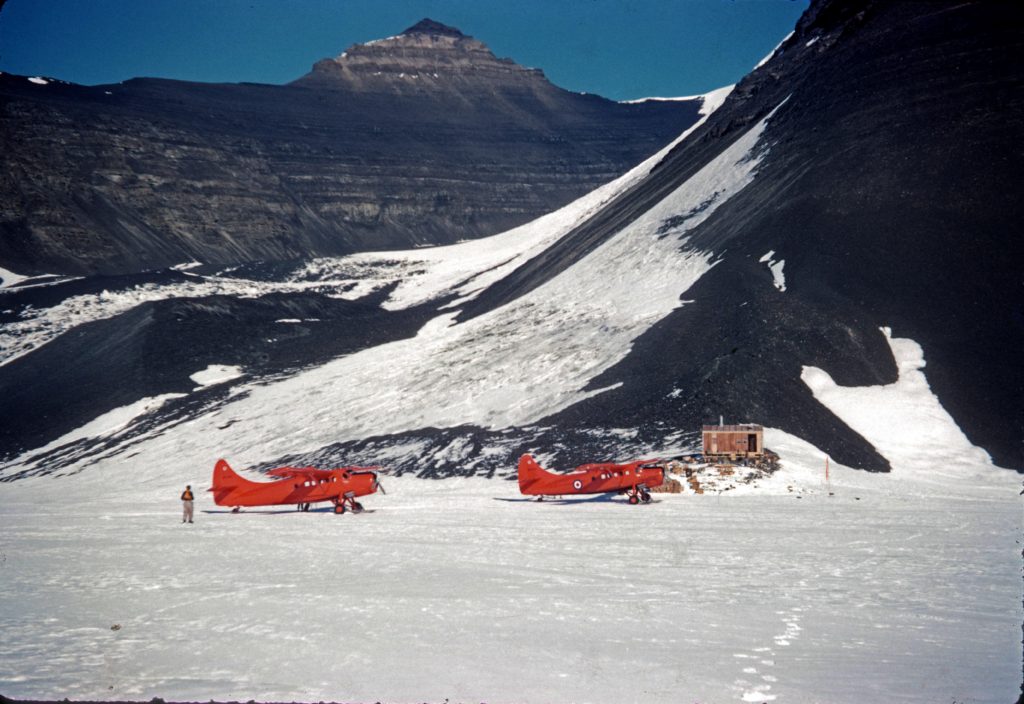
Using both single-engined Otters (294 and 377), the pilots David English, Ron Lord, and Bob Bond flew more than 13,000 nautical miles, in over 130 flying hours, between February 19th and March 4th, 1961, to move 23 tons of materials, fuel, and supplies, plus people, from Adelaide Island to the remote site of the new Base KG at Fossil Bluff.
It was ready for Brian Taylor, Cliff Pearce, and John Smith to spend the first austral winter there, starting on March 4th, 1961. In 2004, Cliff subsequently published a splendid account of his experiences in his book, ‘the Silent Sound.

In December, 1961, Pilot Warren Lincoln joined Bob Bond and Ron Lord in the similarly demanding task of restocking the base and supporting its field workers, (some of whom had sledged there over the sea-ice; others had been flown there). He is shown standing proudly alongside 377, on Deception Island, at the start of the 1961-62 season.
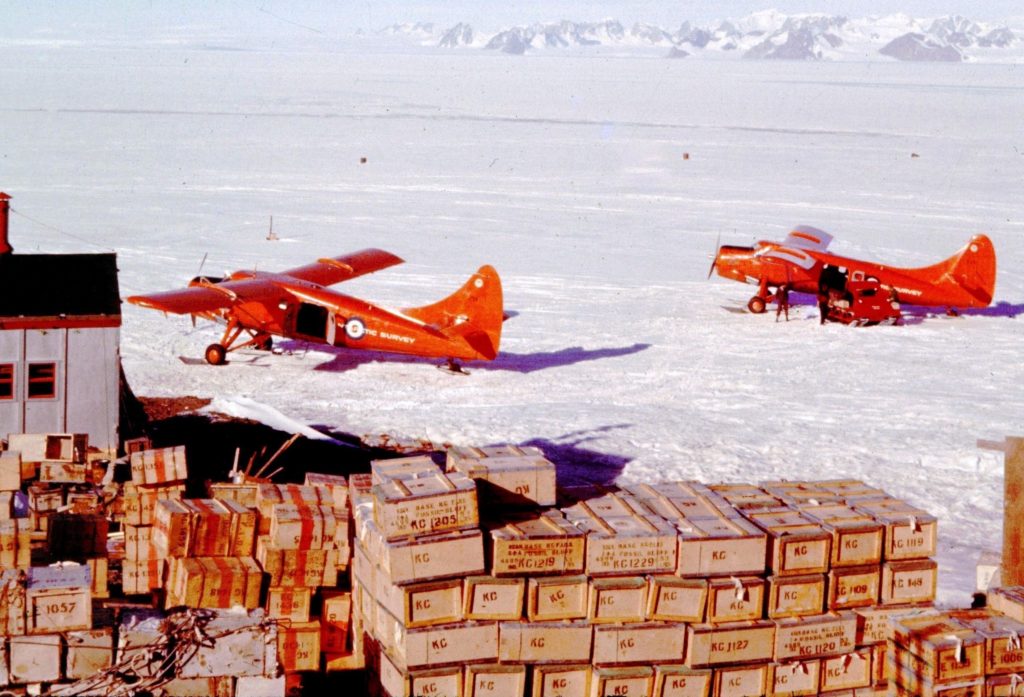
1962
Flight to Re-stock Fossil Bluff – Peter Kennett

We touched down shortly before 12, to be met by Sam (Blake) and Brian Bowler who are now the sole occupants. Offloading only took a few minutes, so we went into the hut for a cup of tea. It is really quite a pleasant place, being of prefabricated design and a little larger than the hut at base T. It consists basically of one room, with four bunks at one end and a semi-partitioned off kitchen at the other and apart from the sparseness of the furniture e.g. packing cases for chairs! it looked quite comfortable.
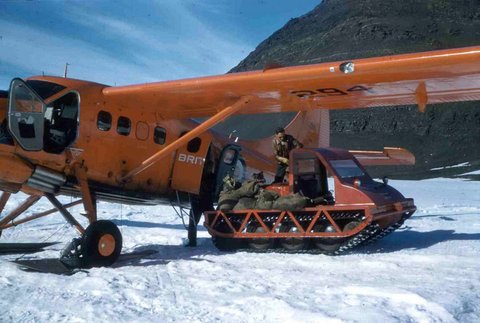
After our cuppa, we piled back into the aircraft and headed for T settling down to enjoy, once more, the really magnificent scenery.
We had no sooner touched down at T than the aircraft were refuelled and loaded ready for another trip, which commenced as soon as the pilots had had their sandwiches and coffee. Meanwhile, I went down to the base and started work on the building again.
1966
April 2nd, 2020 – Jack Coggle MBE is celebrating his 100th birthday, this was what his family said:
Dad was born in Rochester in March 1920, the youngest of four children. He attended the local mechanical school for boys, where it was expected they would go on to work as engineers in the docks. Dad had seen flying boats landing on the Medway and fell in love with planes. So in 1935, he was the only boy from the school to sit the entrance exam to Halton, RAF apprentice school, from which he graduated in 1938.
During the war he was stationed in Scotland, Iceland and Northern Ireland providing technical support to planes protecting shipping convoys in the North Sea and North Atlantic. In 1940 he was posted to Cosford near Wolverhampton, where he met our mother, Anne Nora Coggles, they married in 1942.
After the war, the birth of four children and postings to Norfolk and Germany, the family arrived in Wiltshire in 1961, when dad was posted to RAF Hullavington in Wiltshire. After years of moving, they decided that Wiltshire was where they wanted to settle and they bought a house in Chippenham.
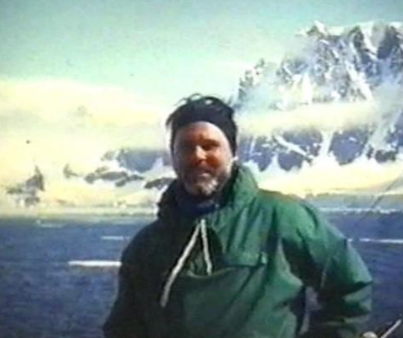
In 1965, dad volunteered on a British Antarctic Survey expedition to the Antarctic. He was to work as an engineer servicing the planes the scientists would use. He was gone for 20 months. These were the days before flights to the Antarctic, high-tech expedition clothing, the internet and sophisticated building materials. He spent one winter at the base on Deception Island. The hut was wooden, ice was thawed for water and huskies used for hauling. The only way to communicate was by post and that took weeks. During the winter months when the base was inaccessible they received radio messages from family about once a month. While there he constructed a plane, a Pilatus Porter, from a kit, that was transported on the same boat that took him to the Antarctic.
On his return he was posted to South Wales, he worked away and only came home on the weekends. In 1971 he was posted to Germany again and it was when he was there that his squadron leader put him forward to receive an MBE for his long service and his expedition to the Antarctic.
In the mid-seventies, they returned from Germany and he retired from the RAF after 40 years.
He continued working as a civil servant. During this time mum and dad established themselves in the community. They were both active members of St Mary`s catholic church and various other community organisations. Dad gave talks about his Antarctic experience at educational and community groups. They also travelled, visiting our brother in Australia several times. They attended several University of the Third Age classes.
The family had dispersed but met together when we could. Mum died in 2010 and in 2015, after a fall Dad went into The Priory Care home.
We had planned a big party for his 100th birthday; about 70 family and friends, old and new, were due to attend, including members of the group who had been with him in the Antarctic. Unfortunately, because of Covid-19, we had to cancel and in the end we were only able to be with him virtually. The care home did a brilliant job giving him a great day, including us as much as possible. We look forward to celebrating together soon.
1969
December 7th – B.O. & Seal Stink – Dave Rowley
We (me, Flight Lieutenant Bert Conchie, Sergeant Dave Brown and Sergeant Ron Ward), the latter being helicopter engineers seconded from Middle Wallop Army Airbase near Salisbury, ferried the Twin Otter and new Turbo Beaver aircraft from Toronto (De Havilland’s factory) through North and South America to Adelaide.
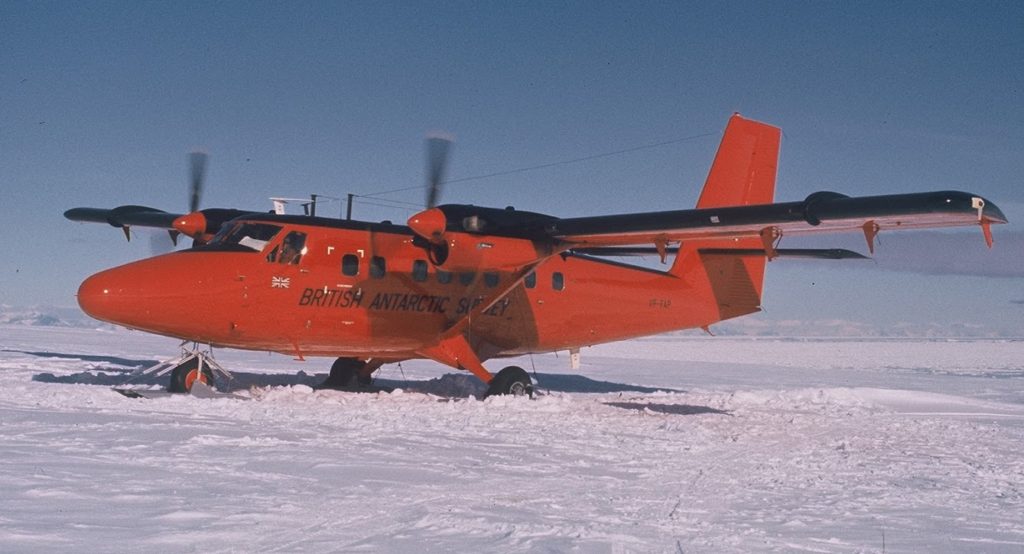
Bert Conchie and myself joined BAS together. He was the last RAF pilot to be seconded to BAS and as the first civilian commercial pilot, HQ put me in charge of the Air Unit with strict instructions that Adelaide Base Commander, Ian Willey, would determine which flights took priority, and would have the last say on whether met. conditions where safe for flight operations . After a disastrous loss of aircraft in previous seasons, HQ were keen to curb any excess of “Gung Ho” enthusiasm on the part of the Pilots.
Bert Conchie – Pilot – BAS Air Unit – 1969 to 1974
Other than his formal Reports and Logs, there are no known writings by Bert Conchie. The next page explains why….
Ground Activities at Adelaide – Rob Campbell-Lent


1971
February 22nd
The intermittent ski marks down the middle were laid down by the chopper pilot to indicate the best area and direction of landing (perfect). The location was Hook Point , Graham Land, which may be a R.N. name , but 30 mins North of base T. There then followed a 1hr 15min. seal recce of the Arrowsmith and the Fjiords for John Biscoe , landing back at T, 2145. Another lovely trip by myself.
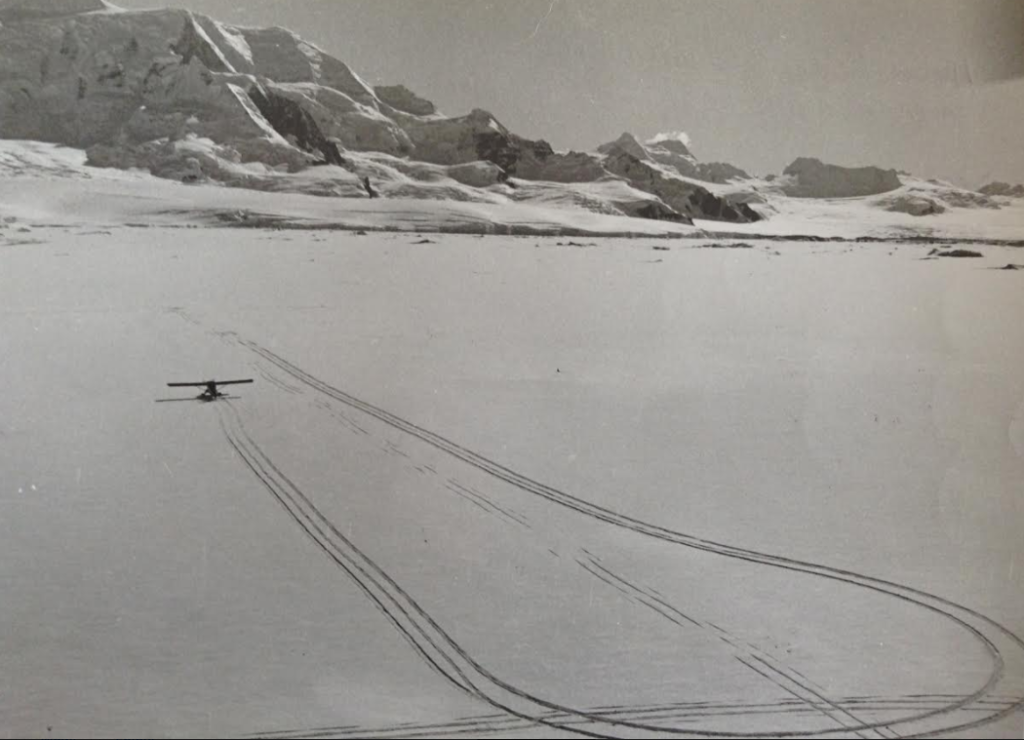
Navy Chopper Incoming – Rob Campbell-Lent
March 1st
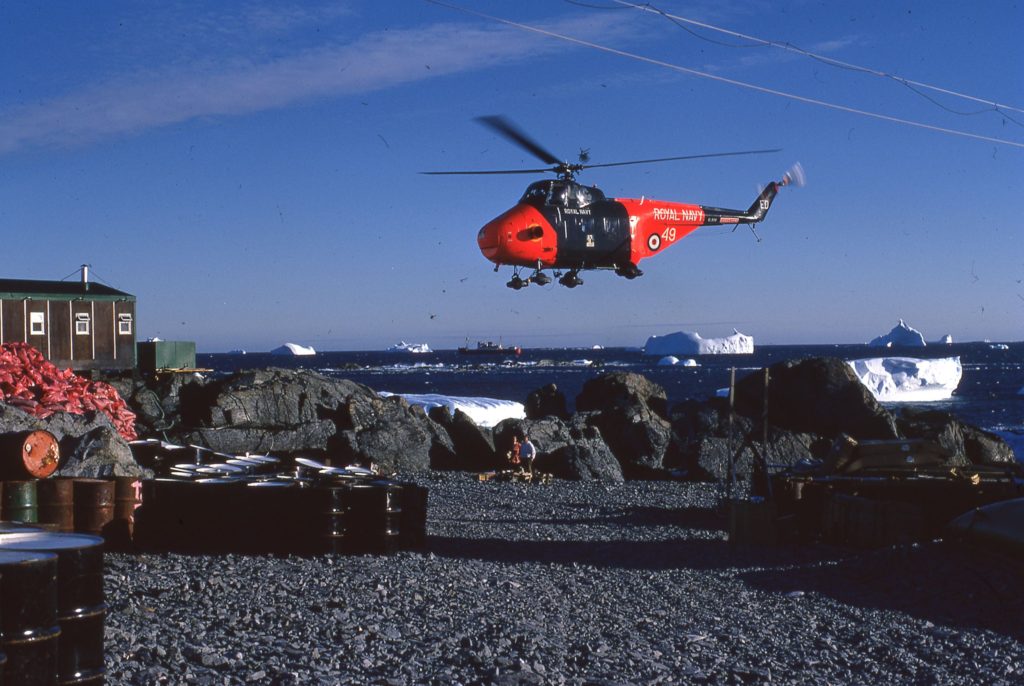
Up early to see Twiggy and Mike Bell arrive by Whirlwind on the dog spans, from Endurance. They landed the helicopter on the beach in Boat Bay and the Navy chopper pilot said he would like a windsock. I spent the rest of the day making one and fixed it on some scaffolding on the pup pen by Stephenson House. Mike and Twiggy brought back 1 gallon of French Brandy for £2, and 6 bottles of wine at 2 shillings each from the Endurance.
Adelaide Gully Run
Dave Rowley entertaining the Fids on the Tractor Shed, in VP-FAM,
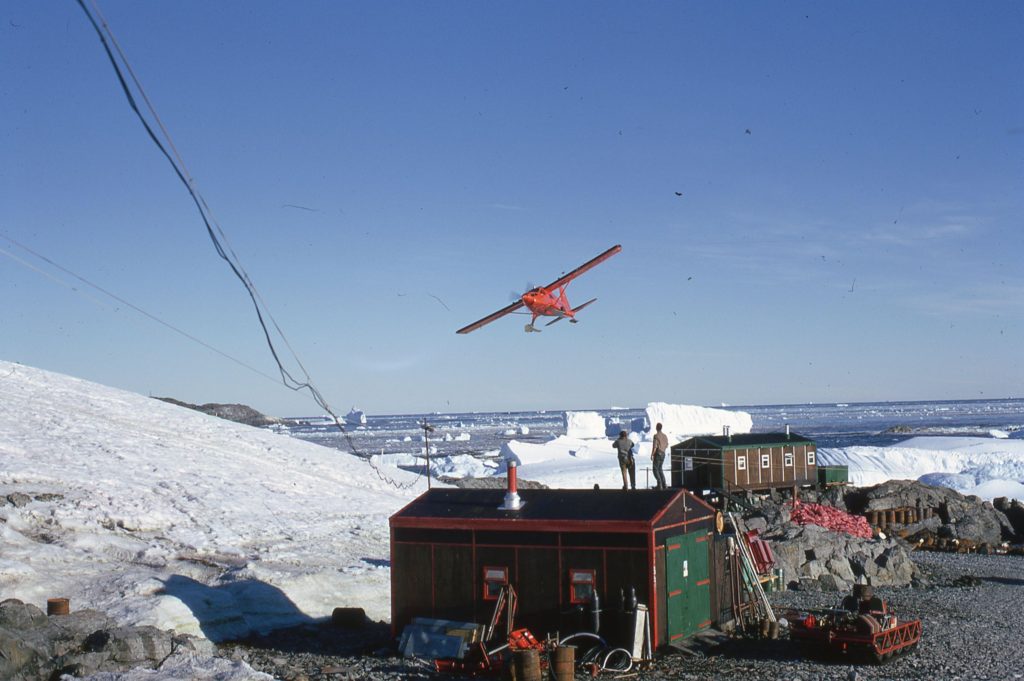
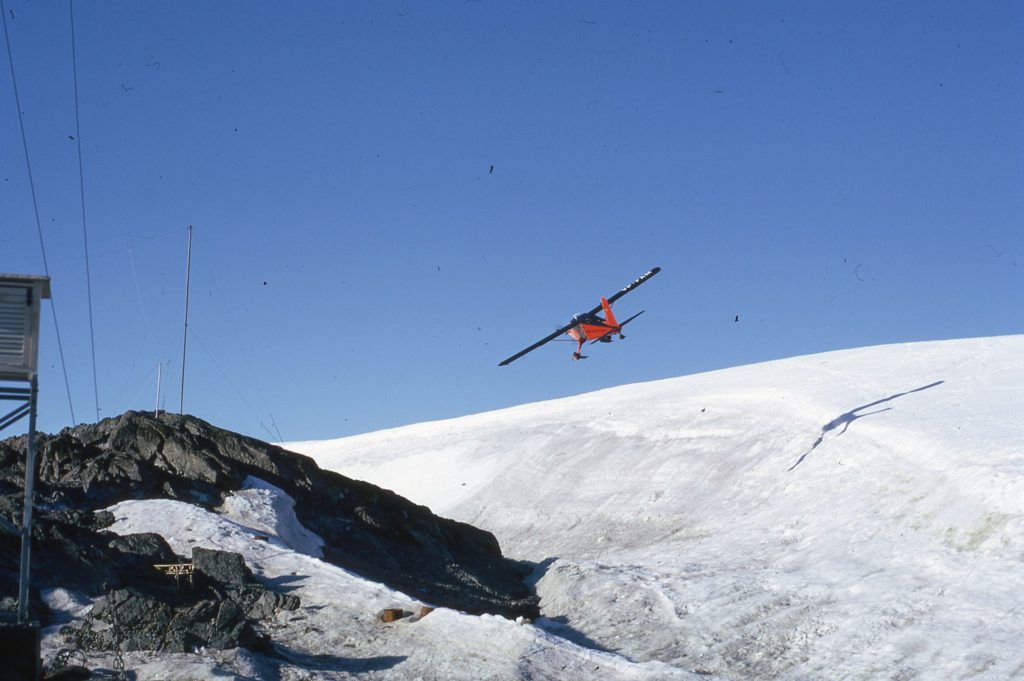
1973
In Awe of Pilots – Dave Singleton
Dave Rowley asked the question on this website (In Awe of FIDS story – Captain Dave Rowley) “How did we think of them? “ So, casting my mind back almost 50 years here are my thoughts and feelings. Think I actually flew in one or other of the Twin Otters about 5 times. In addition, I did have some ground contact when they supplied us in the field. Preparing field airstrips and assessing local weather for flying was all part of the job. So, here are one or two memories of meeting Dave Rowley and Bert Conchie – our pilots for the two years.
Memory 1 – First Flight 1972
When I arrived at Stonington in 1972 I had never been inside a plane let alone flown in one. So, at that time I was a bit apprehensive about flying and the pilots initially were the last thing on my mind.
What worried me was that in previous years there had been a number of incidents and crashes.
A close encounter with Flight Lieutenant Conchie – Drummy Small
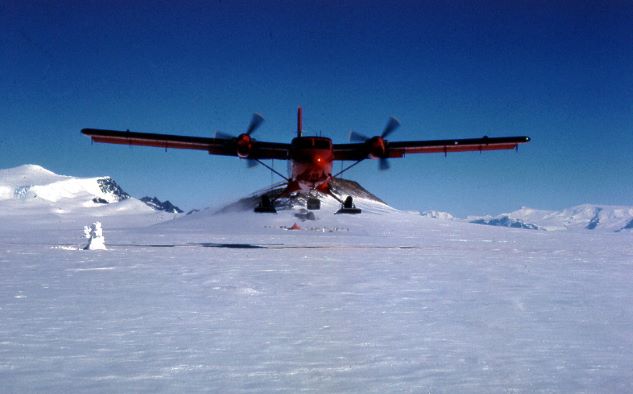
The aircraft was VP-FAP and Bert did a field landing to off-load 10 days food for geophysics Sledge Alpha ((myself and Malc McArthur) on 8 Jan 1973. We were camped to the east of the Chapman Glacier between Chapman Hump and what is now called Goettel Escarpment but was Anaconda Wall in my day. (Why did they have to change all the bloody names???)
As the Twotter was more or less empty and there was a 30 kt headwind Bert decided to test the short take-off capabilities of the Twin Otter while providing the local Fids with a welcome photo opportunity.
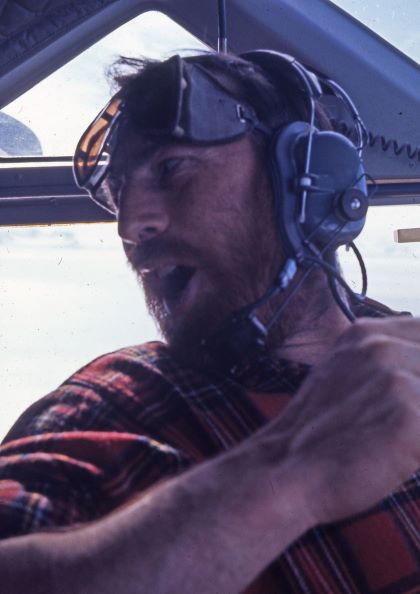
Bert Conchie – Multiple Authors
I was as close to Flight Lieutenant Conchie as anybody could be. During five years of operating with BAS together, we shared close quarter contact, sharing accommodation on ferry flights, and the cockpit on many occasions. He knew my story from day one on our flight to Toronto in November 1969 for our Twin Otter conversion course at the DeHavilland factory at Downsview Toronto.
1974
The Theron Mountains Trip (TAE Shackleton Base)- February 1974 – Dave Rowley
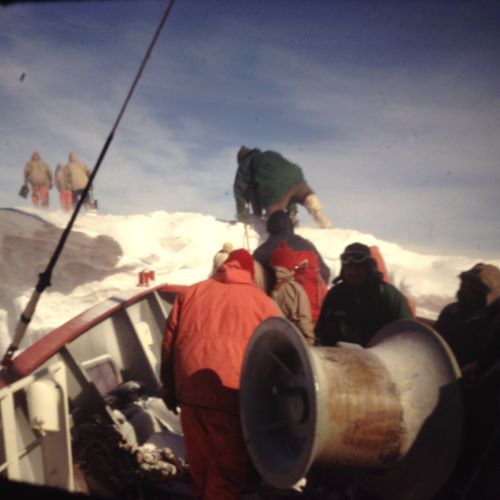
Me and Bert did the first flights to Halley Bay and back from Adelaide in order to pick up Sir Vivian (“Bunny”) Fuchs in his last year as Director, and Derek Gipps, for a tour of the Peninsula bases.
During our stay at Halley, I flew Bunny , and Captain Tom Woodfield up to the Theron Mountains and beyond. We were only a breath from the Pole, but Bunny decided that it wouldn’t be etiquette do ‘drop’ in unannounced, so we headed North with a sinking heart.
The next day, Capt. Woodfield invited me and Bert to join them for a trip to Shackleton Base***. I leaped at it, but Bert declined, he told me that he wanted to live the life of base. Typical of the person.
*** – Shackleton Base was established on the Weddell Sea coast by Sir Vivian Fuchs, as one end of the Trans-Antarctic Expedition, with Scott Base being established on the Ross Sea coast by Sir Edmund Hilary. You can read more HERE
In Awe of Army Engineers – Dave Rowley
They are always in the background, but these guys kept the aircraft flying, and in the six or seven years of our service, everything was done in the open. In the Deception years they had a hanger, and of course Rothera has the ultimate.
Can you imagine changing a component on the engine or recesses of the fuselage in often gloomy none flying days, probably windy and awfully cold.
Ron Ward told me that while changing a component on one of the engines that his screw drivers kept breaking. He eventually found one that he bought in a DIY shop in Toronto that did the job!
And then, there is the epic engine change at KG. What brilliant technicians they were. As a Junior Technician in the RAF, I cannot ever remember any of us being trained up to the standards of those chaps. Nothing gave them doubt or “not doable”.
Those last few years of Base T were unique, and I am aware that all the air unit between 1969 and 75 know it.
Dave Rowley – BAS Air Unit, Adelaide, Pilot – 1969-1974
The Decision to Establish Rothera – Steve Wormald
During the UK summer at BAS HQ, several meetings were held to discuss the problems with Adelaide and the possibilities of opening a base at Rothera. It was decided that we would put in Met and Survey teams at Rothera to properly investigate the viability on all counts for Rothera as the future aircraft support and scientific base.
The two aircraft departed Punta Arenas October 17th, 1974, with Bert Conchie (Pilot), Alec Foreman (Engineer) onboard VP-FAP, and Giles Kershaw (new Pilot –), Alec Simon (Engineer) and Steve Wormald (Field Operations Manager) onboard VP-FAQ. The flight was uneventful in good weather as far as the Argentine Islands. Nothing was seen from then onwards with atrocious conditions even for an experienced Antarctic pilot – violent turbulence, driving snow, 30-40 knot winds and 50 metres visibility. Conditions at Adelaide deteriorated rapidly, and after circling over Adelaide and seeing nothing (except the mast on Avian Island in FAQ’s case), both aircraft diverted to Stonington where the weather was better, but nothing was seen until clear of Adelaide and halfway to Stonington.
The aircraft were picketed at Stonington, and after spending the night on Base, the Air Party flew to Adelaide the next day.
1981
In Praise of Damoy – Steve Garrett

Sea ice prevented RRS John Biscoe from reaching Marguerite Bay at the start of many field seasons (see “Abandon Ship” in 1985). The BAS solution was an airlift of people and equipment to Rothera from Damoy on Wiencke Island opposite Anvers Island.
The Night The Planes Blew Over – Steve Garrett
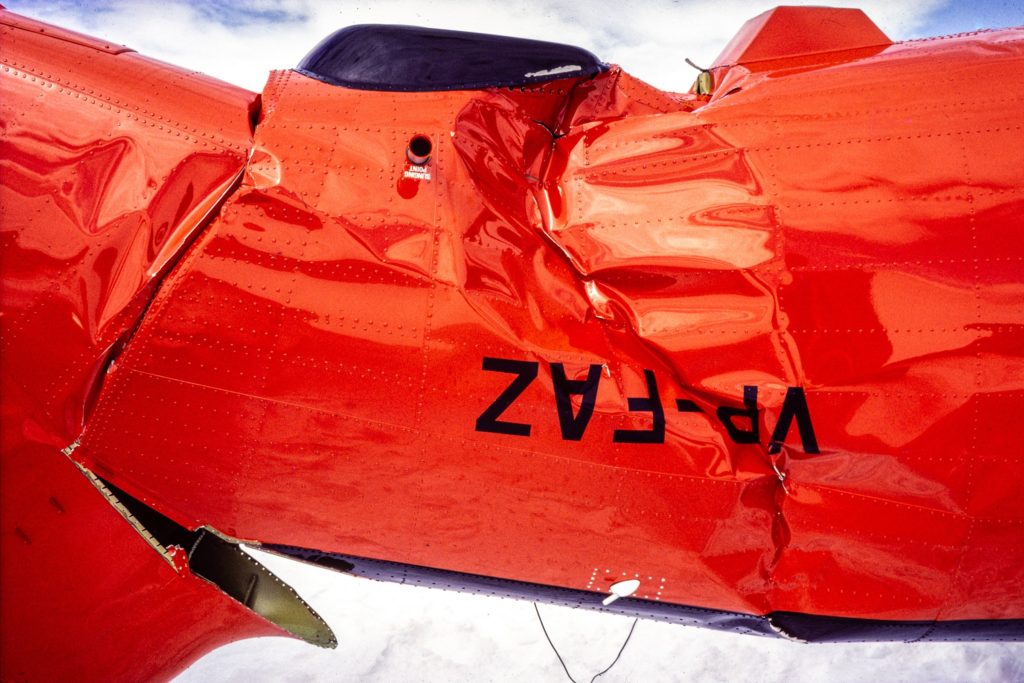
Shortly after arrival at Rothera from Damoy there was a night that would turn our season on its head, both literally and figuratively.
1982
